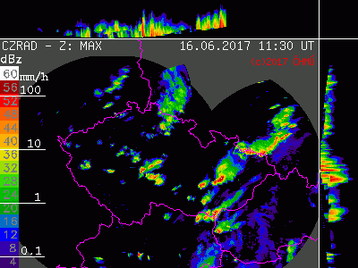Czech Hydrometeorological Institute (CHMI) is deploying a new supercomputer, designed by Japanese IT giant NEC.
The LX-Series machine consists of more than 300 nodes connected through a high-speed Mellanox EDR InfiniBand fabric. It will be used to improve accuracy of weather forecasts, track air pollution and provide early warning in case of extreme weather events.
The new system is scheduled to be put into operation in early 2018.
“For years, we have been successfully collaborating with meteorological institutes, and we look forward to cultivating these partnerships further,” said Andreas Gottlicher, senior sales manager at NEC Deutschland.
Rain or shine
Czech Hydrometeorological Institute was established in Prague in 1919, and has emerged as one of Europe’s foremost authorities on air quality.
According to NEC, atmosphere modeling and weather prediction are the perfect use cases for HPC, since they rely on complex calculations with many variables such as rainfall, temperature, wind and terrain.
The new supercomputer at CHMI will use 3,500 of the latest Xeon E5-2600 v4 cores to observe weather and make more accurate predictions. Storage will be provided by an NEC LXFS-z parallel file system appliance, based on Lustre, with more than 1PB of capacity and a bandwidth of more than 30 GB/s.
“Reliable HPC technology by NEC shall be important both for forecast production and innovation; after Meteo-France, CHMI is the second largest contributor to the development of the ALADIN Numerical Weather Prediction System, currently used by 26 countries,” said Dr. Radmila Brozkova, head of the Numerical Weather Prediction Department at CHMI.
“Moreover, in this project, we have a specific goal to improve air quality trend forecasts in relation to meteorological conditions and the performance of air quality warning systems.”

